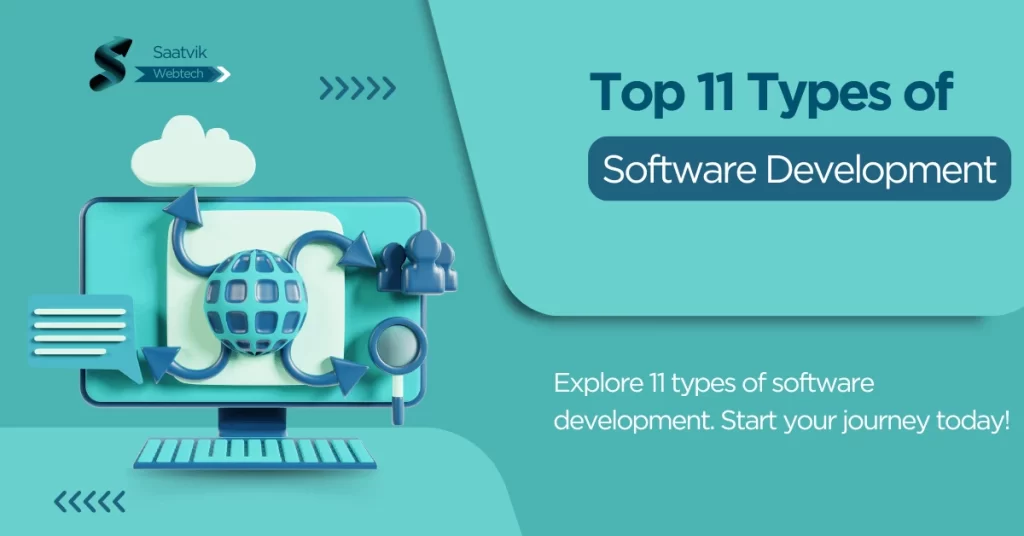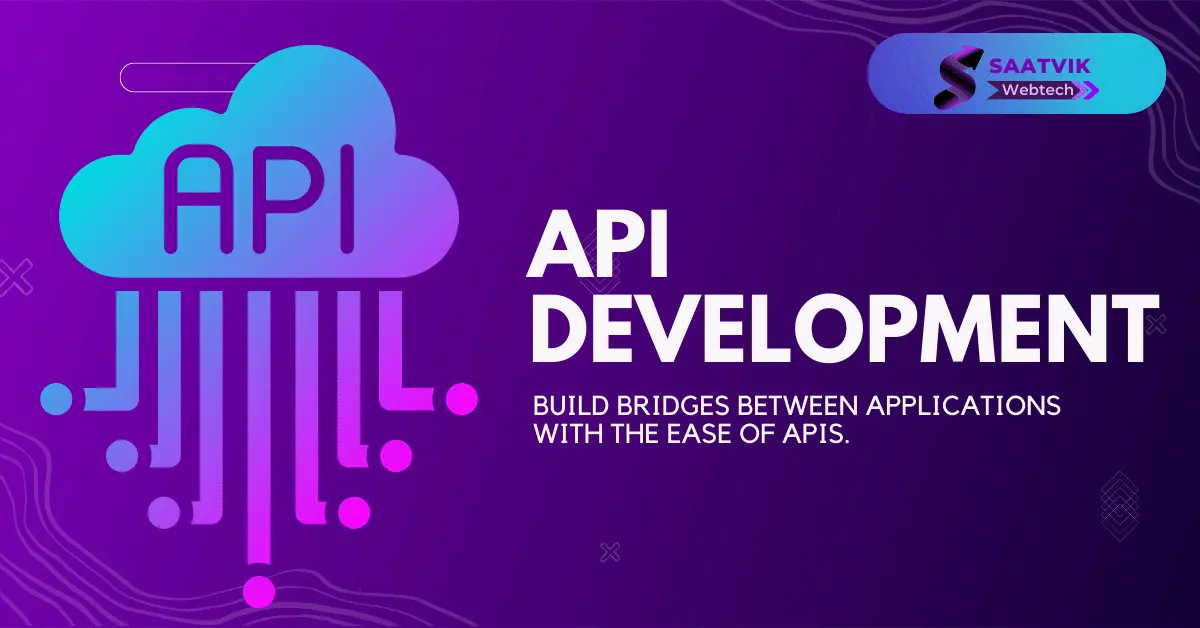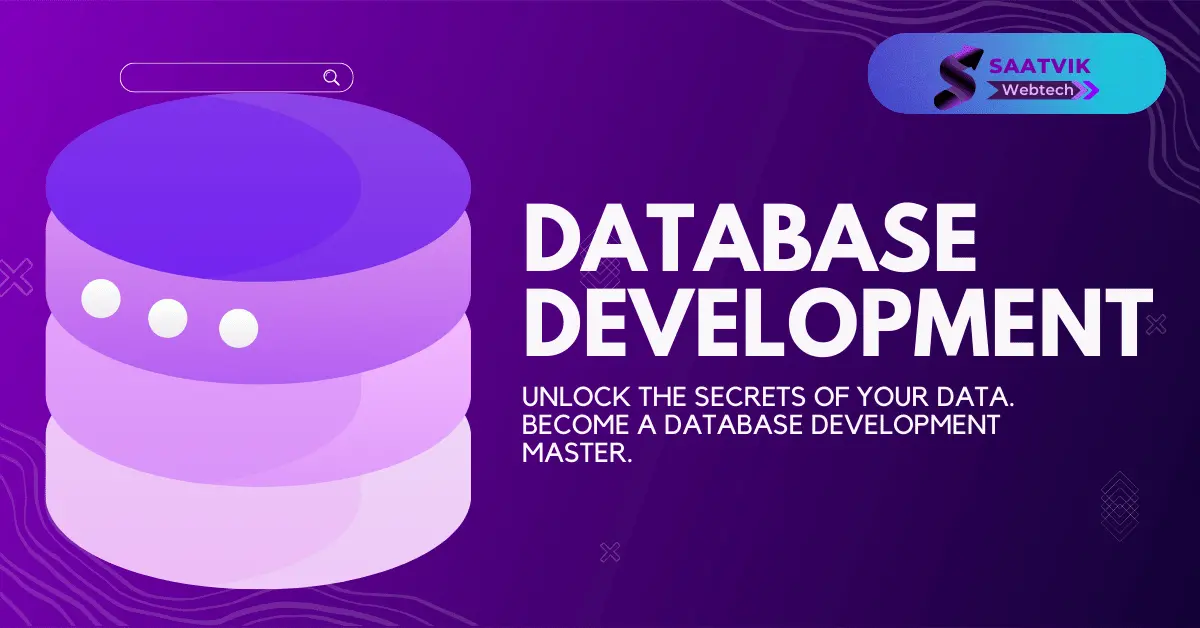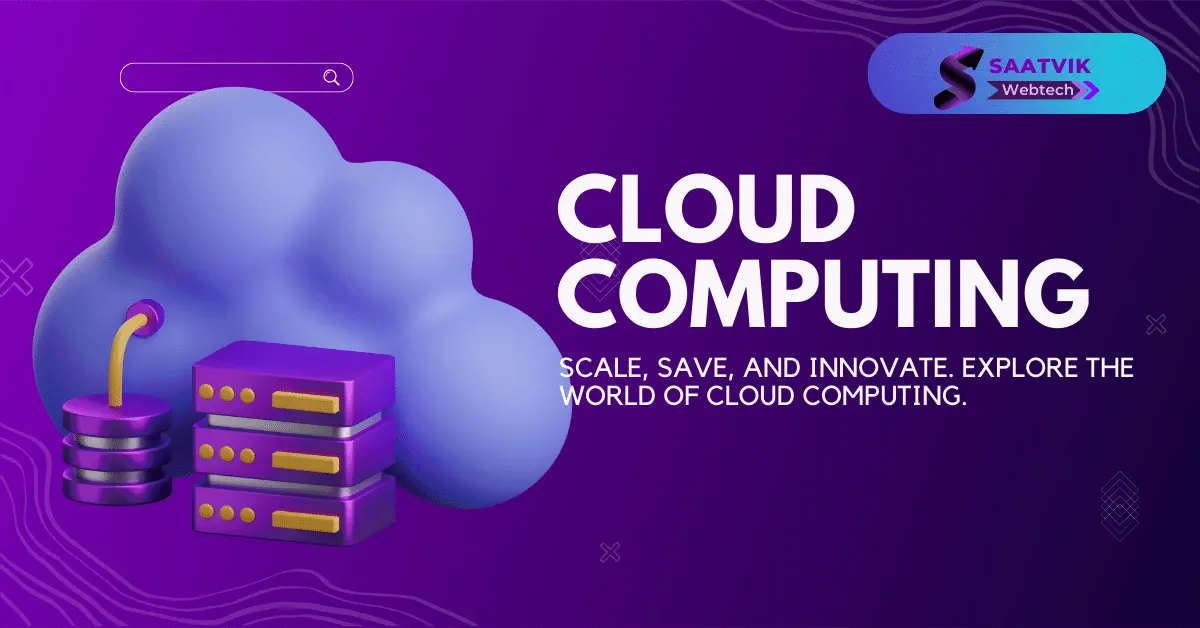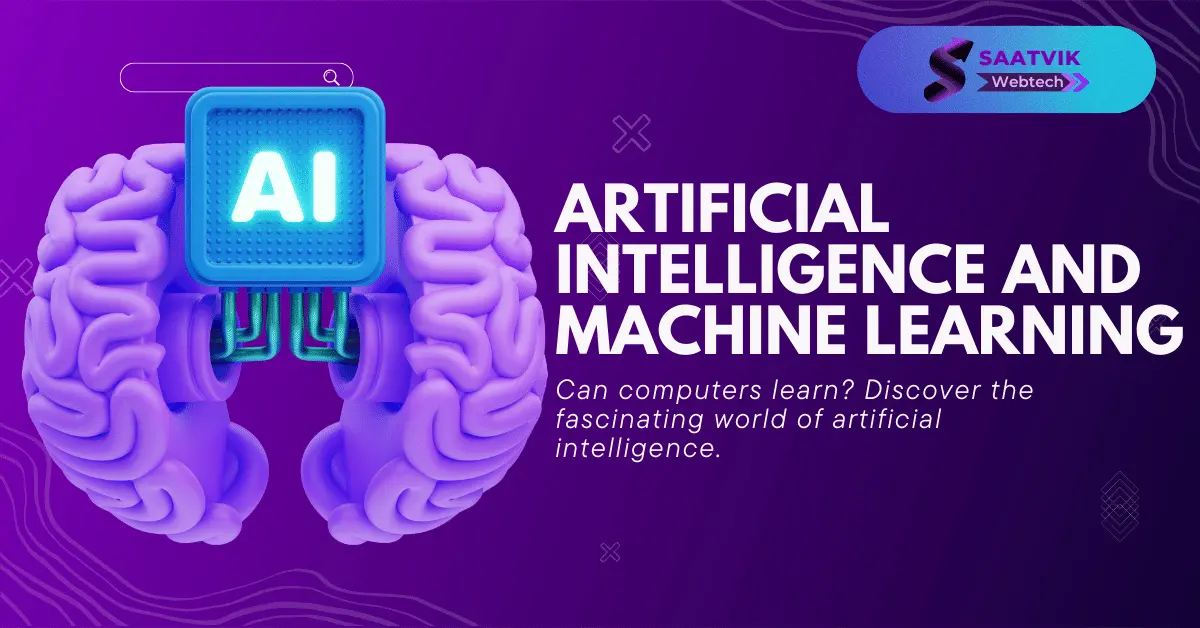Imagine software as the building blocks of our digital universe. Every app, every website, and every behind-the-scenes system that keeps things running all begin with code crafted by skilled developers. But just like a master builder needs various tools and materials, software development isn’t a one-size-fits-all process.
Within this blog, I’m pulling back the curtain on 11 unique specializations within software development. Think of it as your backstage pass to understanding how your favorite apps come to life and how technology is customized to solve problems big and small. Okay, ever wondered how your favorite app actually works? Or maybe you have an awesome idea you want to bring to life? If so, understanding software development is your superpower.
So Let’s dive in
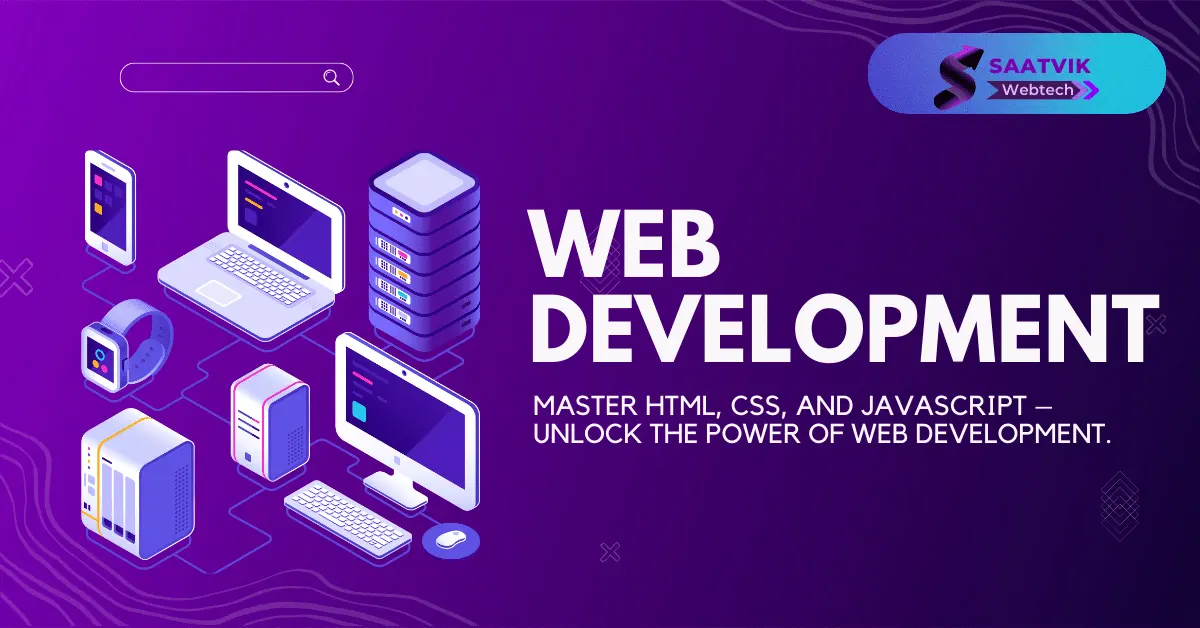 Web Development: The Cornerstone of Our Online Experiences
Web Development: The Cornerstone of Our Online Experiences
If the internet is our digital playground, then web development is the team of architects and builders making it happen. Web developers are the wizards behind every website you visit and every web app you use. Let’s break down the key areas within this field:
Frontend Development:
What You See is What You Get Think of frontend developers as the interior designers of the web. They use languages like HTML, CSS, and JavaScript to craft the visuals, layouts, and interactive elements that you directly experience. A skilled front-end developer is the difference between a clunky, outdated website and one that’s a joy to navigate and interact with.
Backend Development:
The Hidden Powerhouse Backend developers are the engineers working behind the scenes. They build the server-side logic, databases, and systems that make websites actually function. Want to create a login system? Need to process payments? Manage a massive content library? That’s all thanks to backend development.
Full-Stack Development:
Masters of the Whole Domain Full-stack developers are the all-rounders of the web development world. They comfortably handle both the front end and the back end, creating complete, dynamic web experiences. These versatile developers are highly sought-after for their ability to see projects through from concept to completion.
Think about your favorite websites – the ones that are easy to use, look amazing, and maybe even make your life a little simpler. That’s the ultimate power of web development. Ready to learn how to build those experiences yourself?
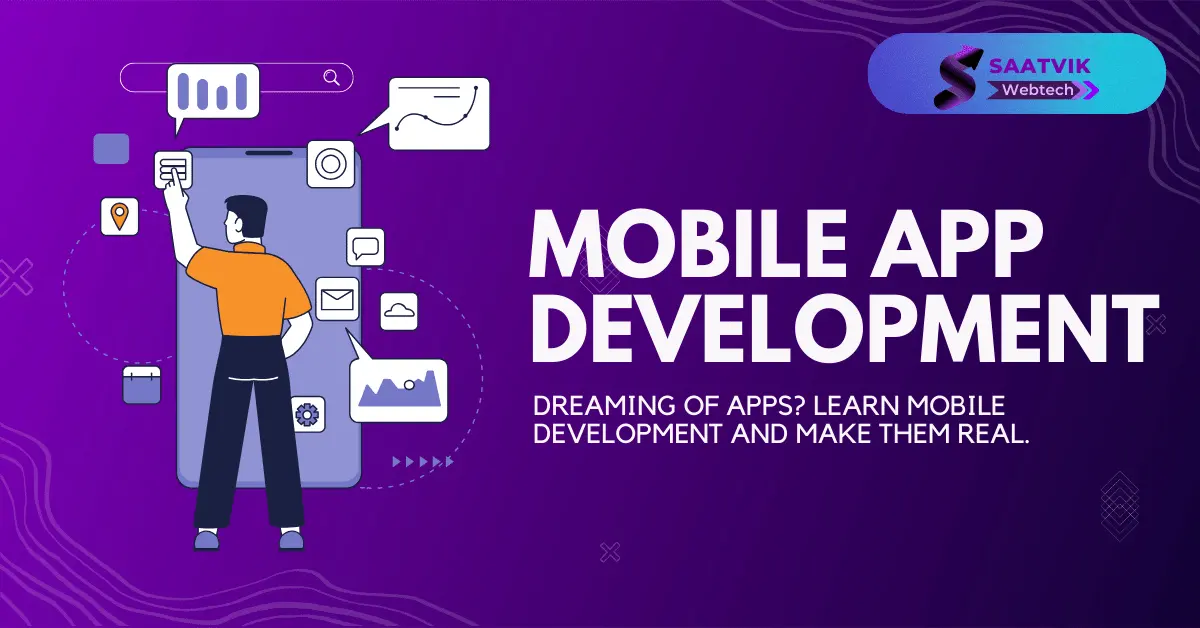 Mobile Development: The Architects of Your Pocket-Sized Universe
Mobile Development: The Architects of Your Pocket-Sized Universe
Imagine a world where your phone isn’t just a communication device but a portal to anything you can dream of—a fitness coach, a language translator, a gateway to immersive gaming experiences. That’s the magic of mobile development, the field that crafts the unique applications that power our ever-evolving mobile world.
Mobile developers are the architects behind the scenes, wielding the tools and languages that turn ideas into the apps we rely on daily. But beneath the sleek interfaces and intuitive features lies a complex ecosystem of technologies. Let’s delve into some of the key types of mobile development:
Android Development: The Power of Open Source
- Wide Reach: With its massive global market share, Android offers developers the chance to reach a vast and diverse audience.
- Customization and Flexibility: Android being open-source is like getting the keys to the whole app-building workshop. You can easily customize experiences down to the core, ensuring your app works seamlessly on a huge range of devices.
- Tools of the Trade: Android Studio, the official IDE, provides a rich set of features for coding, UI design, testing, and debugging. Java and Kotlin are a developer’s best friends when it comes to building Android apps. They’re how you make your ideas snappy, reliable, and ready to handle anything.
iOS Development: Design Excellence and the Apple Ecosystem
- User Experience Focus: iOS development places a strong emphasis on creating apps with an intuitive and visually appealing design that aligns with Apple’s renowned standards.
- Seamless Integration: Apps built for iOS integrate effortlessly with other Apple devices and services, fostering a smooth experience within the Apple ecosystem.
- Tools of the Trade: The Swift programming language, designed for efficiency and safety, is at the core of iOS development. Xcode provides a comprehensive environment for building and deploying high-quality iOS apps.
Cross-Platform Development: Building Once, Deploying Everywhere
- Efficiency and Speed: The ability to develop a single codebase that works on both Android and iOS significantly reduces development time and costs.
- Maintaining Consistency: A cross-platform app ensures a similar user experience across different devices, minimizing discrepancies and providing a unified brand identity.
- Tools of the Trade: Popular frameworks like React Native (using JavaScript) and Flutter (using Dart) enable developers to build apps with near-native performance capabilities.
Important Considerations
When choosing a mobile development path, there’s no single “best” answer. Here are some things to keep in mind:
- Target audience: Do you intend to reach primarily Android users, iOS users, or both?
- Development resources: Do you have developers with expertise in specific languages and frameworks?
- Project complexity: Is your app idea feature-rich and highly interactive?
- Budget and time constraints: Do you prioritize rapid development with cross-platform tools, or is a tailored, native experience with platform-specific expertise more important?
Ready for an even deeper dive? Let me know if you’d like to explore specific tools, best practices, or even real-world examples within any of these mobile development specializations!
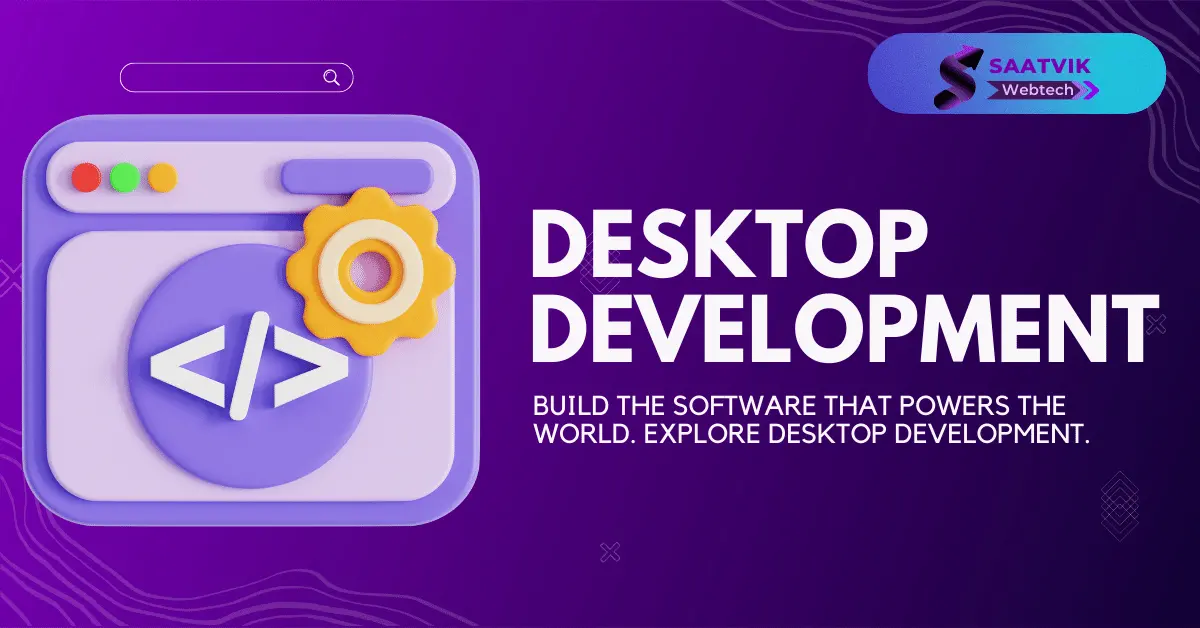 Desktop Development: Building the Software Powerhouses
Desktop Development: Building the Software Powerhouses
Remember those iconic desktop computers that were once the center of our tech universe? While mobile may rule now, desktop development still holds immense power. This is where the heavy-hitter software programs—think video editing suites, complex business applications, and even the hardcore games you love—come to life. Let’s break down the key players in this space:
Windows Applications:
With Windows reigning supreme in offices and homes across the globe, Windows application development offers the chance to reach a massive user base. Tools like Visual Studio and languages like C#, C++, and.NET have long been the backbone of Windows app development.
MacOS Applications:
Known for their polished design and elegant user interfaces, macOS applications target a discerning audience that values aesthetics and a seamless Apple experience. Swift and Xcode remain the core technologies here, just as in iOS development.
Linux Applications:
Linux, the champion of open-source software, offers developers a customizable and often more technically demanding environment. The Linux developer community provides a wealth of powerful tools and libraries. Python, Java, and C++ are so popular in part because of the huge communities around them. That means tons of resources, tutorials, and experienced developers to help when you’re stuck.
The Desktop’s Enduring Appeal
In an era of cloud computing, why does desktop development still matter?
- Performance: Desktops often boast more processing power and memory than mobile devices, making them ideal for resource-intensive applications.
- Customization and Control: Desktop apps grant users deeper control over settings, features, and integration with other desktop software.
- Legacy Systems: Many critical business processes still rely on established desktop applications. Modernizing or updating these can breathe new life into operations.
Game Development: Here Imagination and Technology Collides
Games have an incredible power to transport us to other worlds, challenge our minds, and unleash pure, unadulterated fun. But how do those virtual playgrounds come to life? Games are more than just entertainment – they’re worlds we step into. Game development is where that magic happens, a wild mix of creativity and code coming together.
Game Design:
Crafting the Experience Game designers are the master storytellers and architects. They envision the core gameplay mechanics, the world players will inhabit, and the challenges they’ll face. From defining win conditions to crafting intricate level design, they lay the foundation for an immersive experience.
Game Programming:
Bringing it to Life Game programmers are the wizards who turn ideas into playable reality. They use game engines (like Unity or Unreal Engine) and languages like C# and C++ to code the physics, artificial intelligence, animations, and everything else that makes the game world tick and respond to player input.
Game Testing:
Polishing the Gem Game testers are meticulous detectives, ensuring the game is not only fun but also free of bugs and glitches. They try to break things in every way imaginable, providing feedback that helps developers refine the experience before players get their hands on it.
The Thrill of Creation
Building games that truly break the mold… that’s a serious creative challenge! If you’re the type who loves pushing boundaries, game development might be for you. Imagine designing a fantastical creature, coding the rules of a new virtual sport, or finding that one pesky bug that’s been crashing the game. Whether you’re drawn to the artistic side, the technical challenges, or the sheer thrill of seeing your ideas playable, game development offers a unique avenue for expression.
API Development: Building the Bridges of the Digital World
Think of APIs (application programming interfaces) as the invisible connectors that make our modern interconnected technology ecosystem possible. They allow different apps, platforms, and devices to “talk” to each other, exchanging data and functionality seamlessly. API development is the art of designing and building these powerful communication channels.
How APIs Work (A Simple Analogy)
Imagine a restaurant. You, the customer, want to order food. There’s a menu (the API) listing the available items and how to order them. You place your order through the waiter (like a software client making an API request), and the kitchen (the server with the app’s data and functionality) prepares and delivers your meal.
Key Types of APIs
REST APIs:
REST, the reigning champion of web APIs, uses simple protocols for easy communication between applications. It’s the go-to for many modern web services.
SOAP APIs:
Older but still widely used, SOAP APIs offer a more structured and secure format for data exchange, often favored in critical enterprise systems.
GraphQL APIs:
Tired of getting way more data than you need from an API? GraphQL puts you in the driver’s seat, letting you ask for the specific bits you want and nothing more.
Why APIs Matter
- Sharing Data and Functionality: API Power Integrations. Your weather app can access data from a weather service’s API, and your social media platform can use a payment provider’s API to process transactions.
- Innovation: APIs fuel new products and business models. Companies can open their data or services through APIs, allowing developers to build upon them, driving a thriving ecosystem of interconnected apps.
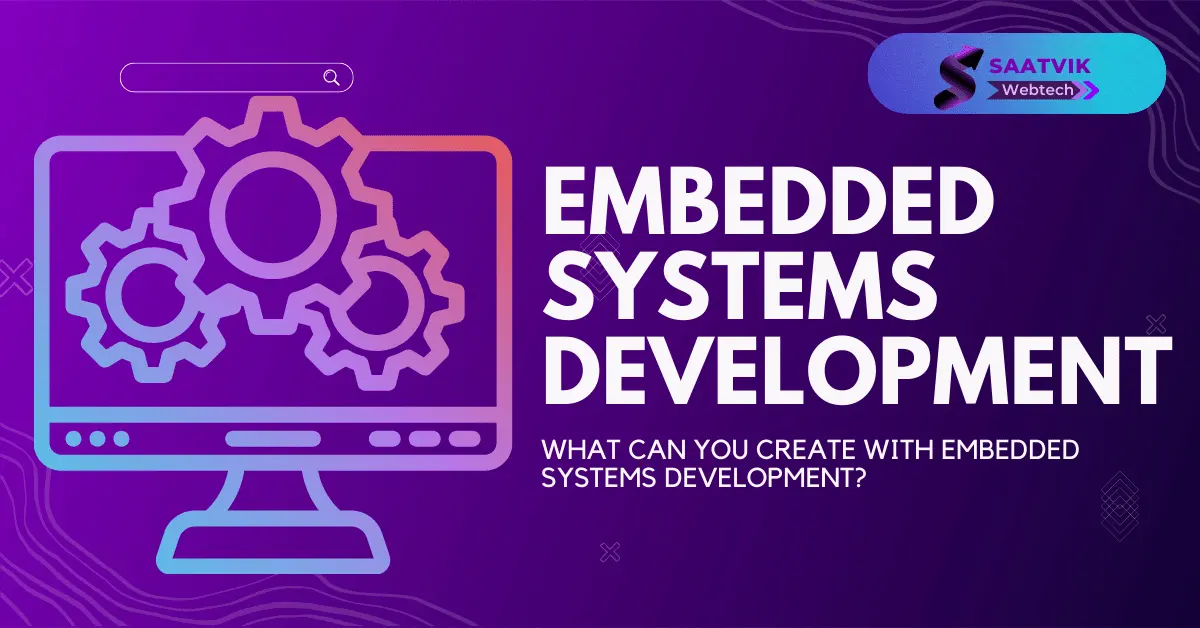 Embedded Systems Development: The Invisible Tech Heartbeat
Embedded Systems Development: The Invisible Tech Heartbeat
Think about the smart devices that surround you—your microwave, your car’s navigation system, and even the traffic lights on the street. They all have one thing in common: tiny computers inside that make them function. Embedded systems development is the specialized field that designs and programs these hidden technological wonders. Let’s uncover its key components:
Firmware programming:
Firmware is the essential software that lives directly on the embedded device’s hardware. Embedded developers use languages like C and C++ to create highly efficient code that controls every aspect of the device’s behavior.
Hardware Integration:
Embedded systems are more than just code. They require a seamless dance between the software and the physical components of the device—sensors, actuators, displays, and more. Embedded developers must carefully consider hardware choices and how the firmware will interact with them.
Real-Time Systems:
Many embedded systems need to respond to events in the real world with lightning-fast precision. Think of the airbag in your car deploying in a split second. Designing real-time operating systems (RTOS) and carefully optimizing code is paramount to achieving this level of responsiveness.
The Power of the Unseen
Embedded systems are the unsung heroes of our technology-driven world. They monitor medical devices, control manufacturing robots, and even power the systems that guide spacecraft. Understanding embedded systems development is a window into how so many essential devices around us function.
Database Development: The Backbone of Digital Organization
Your data is like a treasure trove – but finding the right gems can be tricky. Database development is like building the perfect treasure chest, with everything labeled, organized, and protected. Explore key insights.
Database Design:
Building the Foundation Database designers are the architects of information. They analyze an organization’s needs, determining how data should be structured and connected. Choosing the right database technology (relational databases like SQL Server or MySQL, or NoSQL databases like MongoDB) is crucial at this stage.
Database Administration:
Guardians of the Data Database administrators keep the system running smoothly. They handle security, backups, performance optimization, and ensuring that users can access the data they need. If the database is the library, they are the librarians.
Data Mining:
Unlocking Hidden Insights Data stored in a database has the potential to reveal patterns, trends, and relationships that can drive better business decisions. Data mining involves using tools and techniques to extract valuable knowledge and transforming raw data into actionable insights.
The Power of Organized Data
We’re drowning in data these days! Without databases, finding the right information would be like searching for a needle in a haystack. Think of the online store that remembers your preferences, the healthcare system that manages patient records, or even the app that helps you track your fitness goals. Behind all of these lie carefully crafted databases.
Cloud Computing: Your Apps in the Sky
Remember when software lived only on your computer, taking up precious hard drive space? Cloud computing revolutionizes how software is delivered and used. Instead of your local computer, programs and data now reside on powerful servers that you access over the internet. Let’s break down the key flavors of cloud computing:
Infrastructure as a Service (IaaS):
The building blocks of the cloud. IaaS provides on-demand access to virtual servers, storage, and networking. Think of it like renting a virtual data center where you have full control over the infrastructure. Providers like Amazon Web Services (AWS), Microsoft Azure, and Google Cloud Platform lead the way in IaaS.
Platform as a Service (PaaS):
PaaS is like a shortcut for developers. It handles all the messy server stuff, letting you focus on actually building your app. Think of it as a ready-made environment to build and run your apps in the cloud. Popular PaaS options include Heroku and Google App Engine.
Software as a Service (SaaS):
This is what most of people think of when they hear about cloud computing. SaaS delivers complete, ready-to-use applications through a web browser. Examples are legion: Gmail, Salesforce, and even online productivity tools like Google Docs.
Why the move to the cloud?
- Scalability: Need more computing power during peak usage? The cloud makes it easy to scale up or down based on demand.
- Cost-effectiveness: Say goodbye to upfront hardware costs and only pay for the resources you actually use.
- Accessibility: As long as you have a stable internet connection, you can access your cloud-based apps and data seamlessly anywhere in the world.
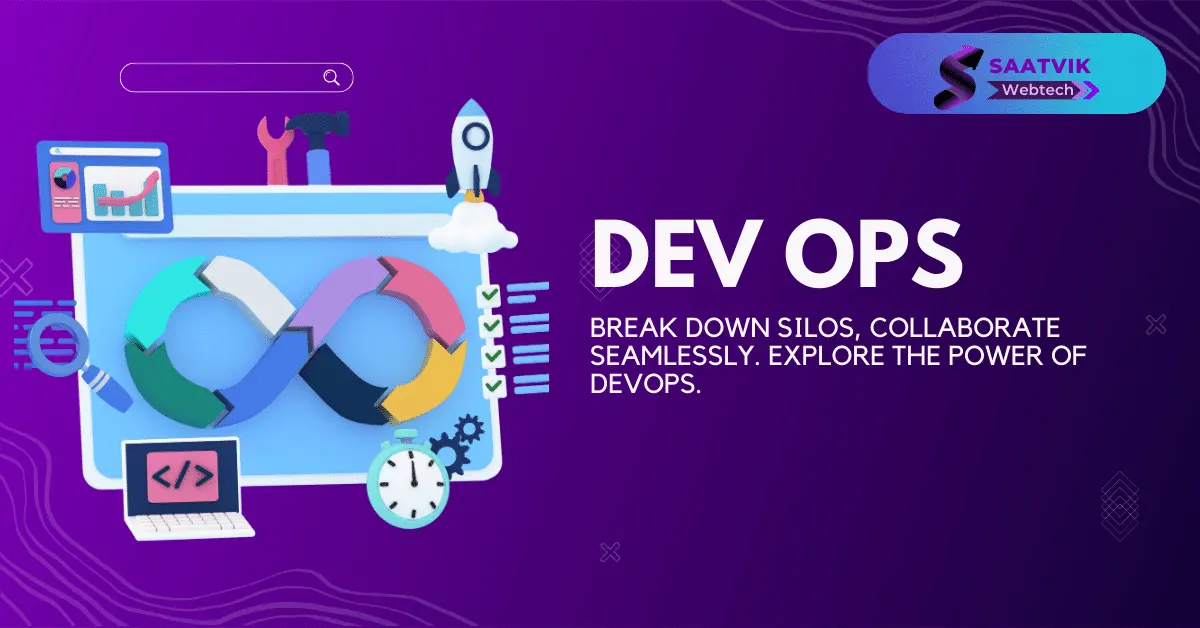 DevOps: Where Development and Operations Dance
DevOps: Where Development and Operations Dance
Picture software development as a relay race. Developers write the code (like sprinters building a powerful engine), and operations teams deploy and maintain it (like the crew keeping the track smooth). DevOps is the philosophy that breaks down the wall between these teams, fostering collaboration and automation to make the process of delivering software faster and more reliable. Let’s look at its key weapons:
Continuous Integration/Continuous Deployment (CI/CD):
Think of this as a super-efficient assembly line for software. CI encourages frequent code changes, which are automatically tested and integrated into a central codebase. CD automates the process of taking those changes to production. Tools like Jenkins, CircleCI, and GitLab CI/CD are cornerstones.
Automation Scripts:
DevOps engineers are like automation wizards. They write scripts to automate everything from setting up servers to running tests to deploying code. This eliminates manual, error-prone tasks and frees up teams to focus on innovation.
Monitoring and logging:
Keeping a watchful eye on how your software performs in the real world is crucial. DevOps uses tools for monitoring system performance, resource usage, and logging errors. This data helps identify problems quickly and drive continuous improvement.
Why DevOps Matters
- Speed to Market: With streamlined processes and automation, DevOps enables businesses to release new features and updates more frequently, outpacing the competition.
- Reliability: Increased automation and rigorous testing help reduce errors and downtime.
- Happy Teams: Breaking down silos between development and operations creates a happier, more collaborative work environment.
 Security Software Development: Shielding Your Digital World
Security Software Development: Shielding Your Digital World
In an era of cyberattacks and data breaches, building software with security in mind isn’t just smart; it’s essential. Security software development is the discipline of proactively building defenses directly into the heart of applications. Let’s look at the key tools in its arsenal:
Cryptography:
The Art of Secrets Cryptography is the science of scrambling data to make it unreadable to anyone who doesn’t have the right ‘key.’ Secure applications rely on strong encryption algorithms to protect sensitive information in transit and at rest, ensuring unauthorized eyes can’t pry.
Threat Modeling:
Thinking Like the Enemy Security is all about preparing for the unexpected. Threat modeling involves analyzing a system to identify potential vulnerabilities and the tactics attackers might use. Armed with this knowledge, developers can preemptively plug holes before anyone can exploit them.
Security Testing:
Battle-Testing Your Defenses Rigorous testing is crucial to uncovering hidden flaws before hackers do. Security testing goes beyond regular functionality tests, employing techniques like penetration testing (where ethical hackers simulate an attack) and vulnerability scanning to find and address potential weak spots.
The Stakes Are High
Building secure software isn’t just about protecting data; it’s about protecting reputations and user trust. A single security breach can have devastating consequences. By embracing security software development, businesses and developers can create a much safer digital environment for everyone.
Artificial Intelligence and Machine Learning: Teaching Computers to Think
Imagine a world where software can learn from experience, recognize patterns humans might miss, and even converse in ways that feel eerily natural. Artificial intelligence (AI) and its branch, machine learning (ML), are making those possibilities a reality. Let’s break down some essential components of this field:
AI Algorithm Development:
At the heart of AI lie ingenious algorithms. These are like recipes that tell the computer how to learn and make decisions. AI developers use a mix of techniques, from classic search algorithms to powerful neural networks inspired by the structure of the human brain.
Machine Learning Models:
Think of a machine learning model as a student. You feed it data (the textbook), and it learns to identify patterns and make predictions. There are many types of models: some excel at image classification, others understand language, and more!
Natural Language Processing (NLP):
Bridging the gap between humans and computers, NLP focuses on teaching machines to understand and generate human language. This is what powers chatbots that feel surprisingly conversational, translation software, and even tools to analyze sentiment on social media.
AI & ML in the Real World: Transforming Our Lives
We’re only starting to scratch the surface of what AI and ML can do. From smarter healthcare to amazing new art forms, this technology’s potential is mind-blowing. Consider these examples:
-
- The Rise of AI Assistants: From Siri and Alexa to the remarkably articulate ChatGPT, AI-powered assistants are becoming staples of our daily lives. They help us schedule appointments, play music, control our smart homes, and even access information in a conversational way that feels far more natural than traditional search engines.
- AI-Powered Creativity: Tools like DALL-E, which generate images from simple text descriptions, showcase AI’s ability to unleash our inner artist. AI also aids in music composition, video editing, and even writing, providing new avenues for creative expression.
- The AI Coding Revolution: Imagine a programming assistant that can write code for you! Tools like GitHub Copilot, powered by AI, do just that. They analyze your requirements and suggest code snippets, potentially accelerating development processes and making programming accessible to more people.
Conclusion For The Explained Types Of Software Development
Remember, every app you use, every website, and every technological wonder began as an idea in someone’s mind. With the power of the 11 types of software development, those ideas transform into reality.
What kind of mark will you leave on the digital world? Will you be an app innovator, a data detective, or an AI pioneer? Exploring these 11 paths is your first step towards making it happen.
